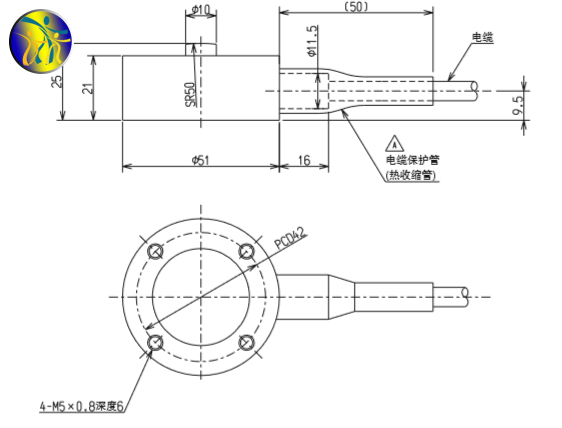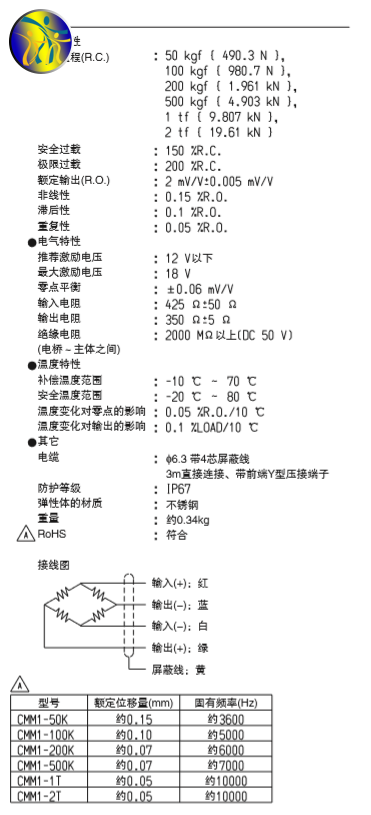Guangzhou Zhongxin Automation Technology Co., Ltd. specializes in supplying the Japanese MINEBEA CMM1 series
Load Cell, [CMM1 sensor] CMM1-50kgf~CMM1-2tf_ The Japanese Minebea weighing sensor ensures fast delivery time, 100% genuine, and strives to become the top brand for sensor sales in China. Japanese Minebea BCL series weighing sensor related models: CMM1-50kgf, CMM1-100kgf, CMM1-200kgf, CMM1-500kgf, CMM1-1Tf, CMM1-2Tf
MINIBEA, JapanCMM1 sensor is one of our company's key competitive products, with an absolute advantage in price. It is available in stock, original, authentic, and reliable! Ensure satisfactory price and quality!We solemnly promise: "Within three months, if there are any quality issues, we will unconditionally return or exchange the goods, refund the full payment, and do not charge any fees. 1 year warranty, ready for repair!
Introduction to the Japanese Minebea (CMM1) CMM1 seriesProduct brand:
Minebea, JapanLoad CellProduct abbreviation: Japan CMM1 weighing sensor
Product model: CMM1
Product characteristics:
Spoke type weighing sensorProduct principle: Resistance strain gauge
Optional range: 50kgf~2Tf
Application scope:
Electronic scale, commodity scale, platform scale, hopper scale
Japanese MINEBEA (CMM1) CMM1 series exterior dimensions
 Specifications and parameters of Japan MINEBEA (CMM1) CMM1 series
Specifications and parameters of Japan MINEBEA (CMM1) CMM1 series
 Complete model of the Japanese MINEBEA (CMM1) CMM1 series
Complete model of the Japanese MINEBEA (CMM1) CMM1 seriesJapan MINIBEA (CMM1) CMM1-50kgf weighing sensor with a range of 50kgf
Japan MINIBEA (CMM1) CMM1-100kgf weighing sensor with a range of 100kgf
Japan MINIBEA (CMM1) CMM1-200kgf weighing sensor with a range of 200kgf
Japan MINIBEA (CMM1) CMM1-500kgf weighing sensor with a range of 500kgf
Japan MINIBEA (CMM1) CMM1-1Tf weighing sensor, measuring range 1Tf
Japan MINIBEA (CMM1) CMM1-2Tf load cell, measuring range 2Tf
Extended Reading
Performance indicators of weighing sensorsThe performance of a weighing system can be measured by indicators such as linearity, hysteresis, repeatability, and creep.
Linear:Indicates the consistency between the actual output of the system and the theoretical straight line. As shown in the figure, when linear errors occur, the output of the system is correct at no load and full load, but the input-output points between these two points are inconsistent with the ideal state. Linear error is the maximum difference between the theoretical straight line and the actual output curve.
Lag:Indicates the degree to which the input-output curve of the system does not coincide during loading and unloading.
Repeatability:Indicates the degree of inconsistency in the system's output for several consecutive weighing of the same weight during the loading or unloading process. Usually expressed as the percentage of the total output that is the difference between the minimum output and the maximum output of the system under the same loading condition.
Creep:The characteristic of a system that bears a constant weight at a certain temperature, and the output changes over time due to the mechanical deformation of the elastic material of the sensor.
2、 The Principles and Differences of Three and Four Wire Transmitters
Different wire systems refer to the differences in the working principle and structure of various weight transmitters that output analog DC current signals, rather than just referring to the wiring form of the transmitter.
The term 'several wire system' came into existence after the birth of two wire transmitters. This is the result of the widespread application of electronic amplifiers in instruments. The essence of amplification is an energy conversion process, which cannot be separated from power supply. Therefore, the first to appear were four wire transmitters; Two wires are responsible for the power supply, and the other two wires are responsible for outputting signals that are converted and amplified (such as voltage, current, etc.). The emergence of the ddz - ii type electric unit combination instrument, a four wire transmitter with a power supply of 220v. ac and an output signal of 0-10MA. DC, has been widely used, and its presence can still be seen in some factories.
In the 1970s, China began producing DDZ III electric unit combination instruments and adopted the International Electrotechnical Commission (IEC) standard for analog signals used in process control systems. The instrument transmission signal adopts 4-20MA.DC, and the contact signal adopts 1-5V.DC, which is a signal system that uses current transmission and voltage reception. By using 4-20MA.DC signals, on-site instruments can achieve a two wire system. However, due to limitations, the two wire system was only used on pressure and differential pressure transmitters at that time, while temperature transmitters still used the four wire system. The product range of two wire transmitters in China has greatly expanded and their application fields are also increasing. At the same time, the majority of transmitters imported from abroad are also two wire systems.
The essence of the two wire system is that the power supply and load are connected in series, with a common point. However, the signal connection and power supply between the on-site transmitter and the control room instrument only use two wires, which are both power and signal wires. Due to the signal starting point current of 4MA.DC, the two wire transmitter provides static working current for the transmitter. At the same time, the instrument electrical zero point is 4MA.DC, which does not coincide with the mechanical zero point. This "active zero point" is conducive to identifying faults such as power outage and wire breakage. Moreover, the two wire system also facilitates the use of safety barriers, which is conducive to safety and explosion protection.
The above is [CMM1 sensor] CMM1-50kgf~CMM1-2tf_ Detailed information of the Japanese Minebea weighing sensor, if you are interested in [CMM1 sensor] CMM1-50kgf~CMM1-2tf_ If you have any questions about the price, delivery time, model, and inventory of Minebea weighing sensors in Japan, please feel free to call
18520271262 Chen GongObtain [CMM1 sensor] CMM1-50kgf~CMM1-2tf_ Latest price details for Minebea weighing sensors in Japan.


